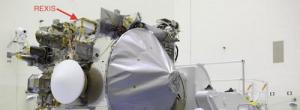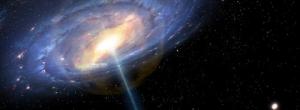Researchers synthesize atomically precise diamond-shaped nanoclusters of silver
The nanoclusters where synthesized in Xiamen University in China and characterized by X-ray crystallography and electron microscopy in China, Australia and Germany. Their electronic structure and optical properties were studied computationally in the...
NASA’s OSIRIS-REx Speeds Toward Asteroid Rendezvous
NASA's first asteroid sampling mission launched into space at 7:05 p.m. EDT Thursday from Cape Canaveral Air Force Station in Florida, beginning a journey that could revolutionize our understanding of the early solar system.
Asteroid Mission Will Carry Student X-ray Experiment
Milky Way Had a Blowout Bash 6 Million Years Ago
SpaceX Dragon Splashes Down with Crucial NASA Research Samples
SpaceX's Dragon cargo spacecraft splashed down in the Pacific Ocean at 11:47 a.m. EDT Friday, Aug. 26, southwest of Baja California with more than 3,000 pounds of NASA cargo, science and technology demonstration samples from the International Space...
A nanoscale wireless communication system via plasmonic antennas: Greater control affords 'in-plane' transmission of waves at or near visible light
One of the barriers to advances in "on-chip" communications is the size of the electromagnetic waves at radio and microwave frequencies, which form the backbone of modern wireless technology. The relatively large waves handcuff further miniaturization...
NASA's Juno Successfully Completes Jupiter Flyby
NASA's Juno mission successfully executed its first of 36 orbital flybys of Jupiter on August 27. The time of closest approach with the gas-giant world was 6:44 a.m. PDT (9:44 a.m. EDT, 13:44 UTC) when Juno passed about 2,600 miles (4,200 kilometers)...
A Surprising Blazar Connection Revealed








